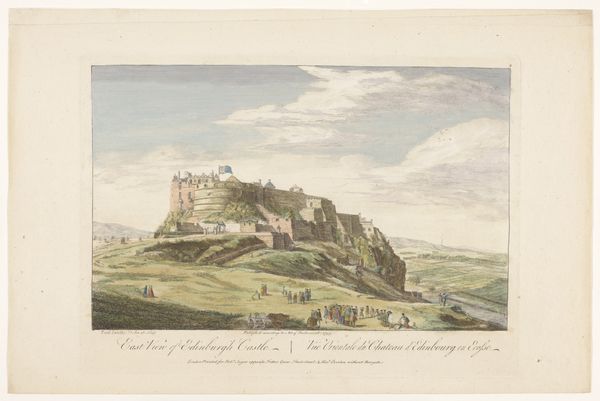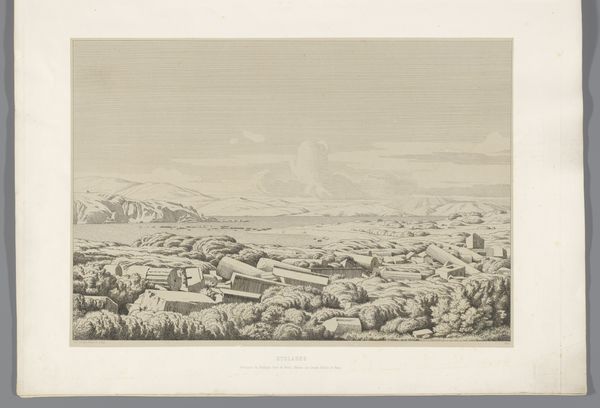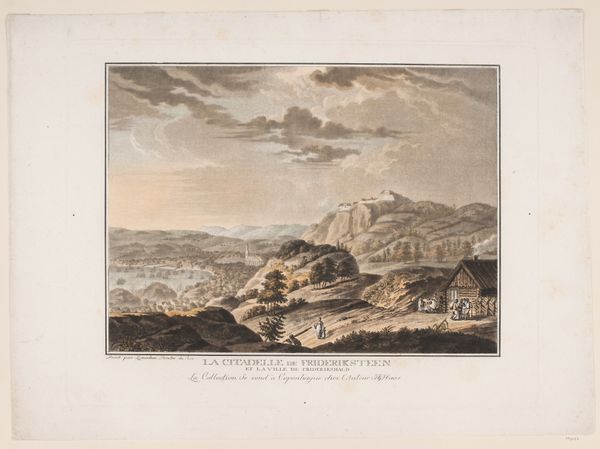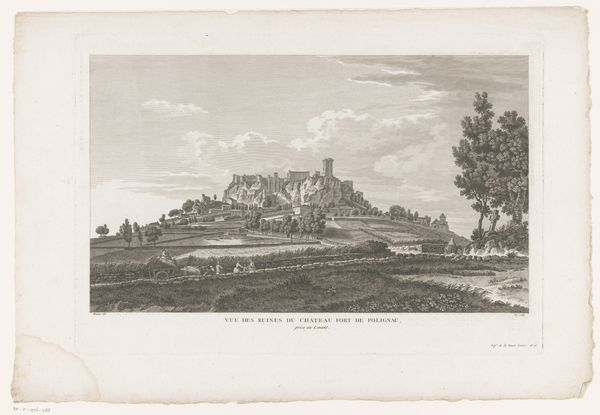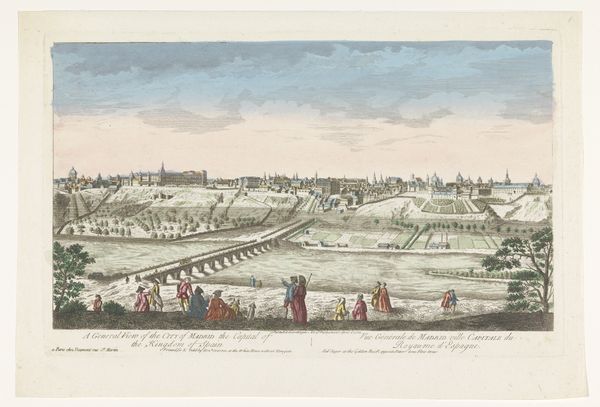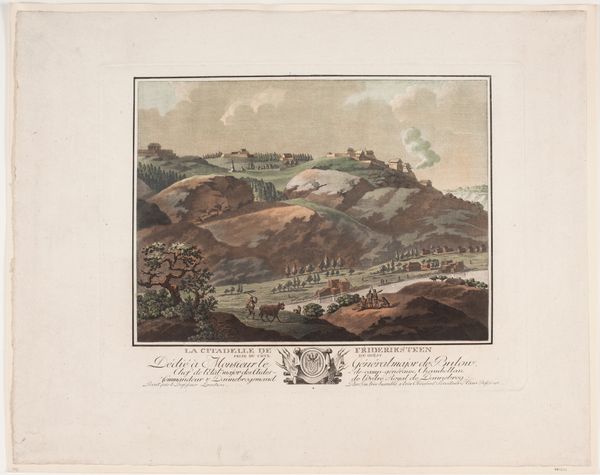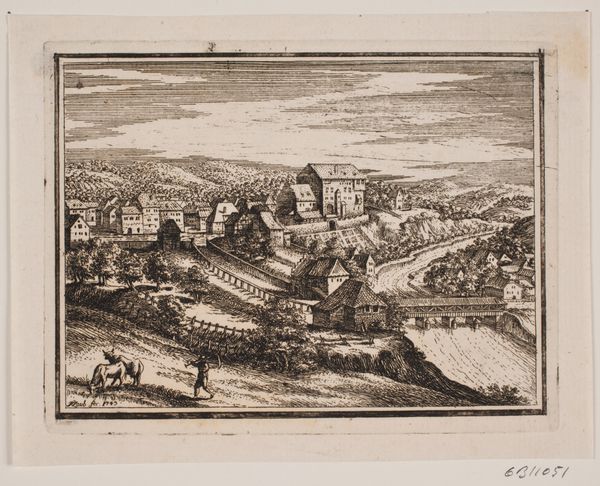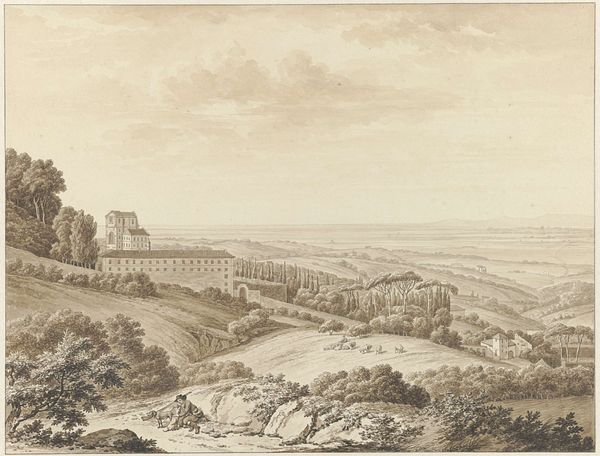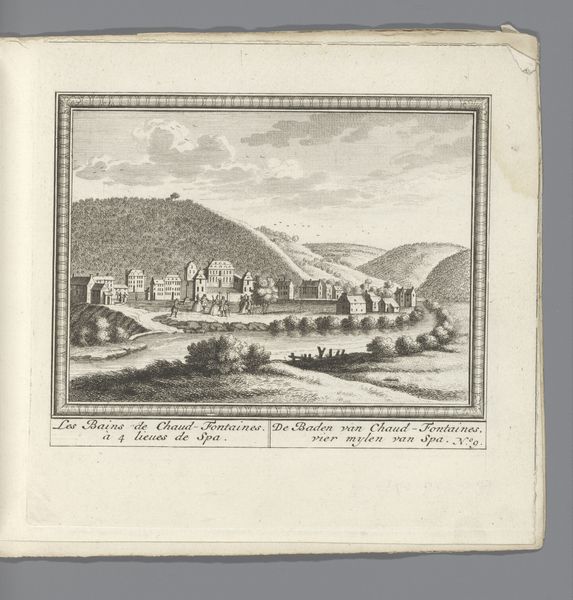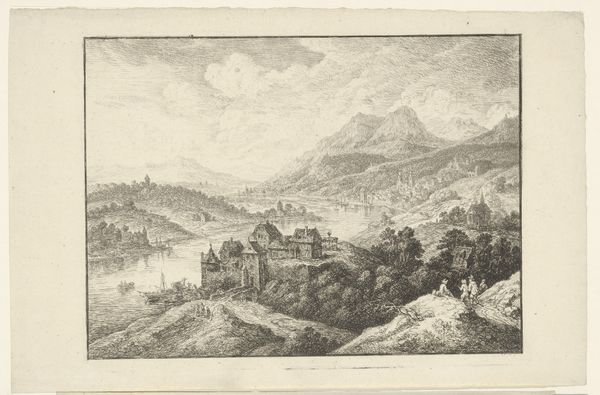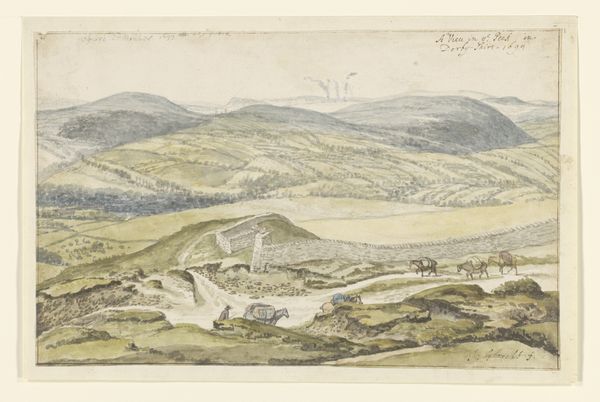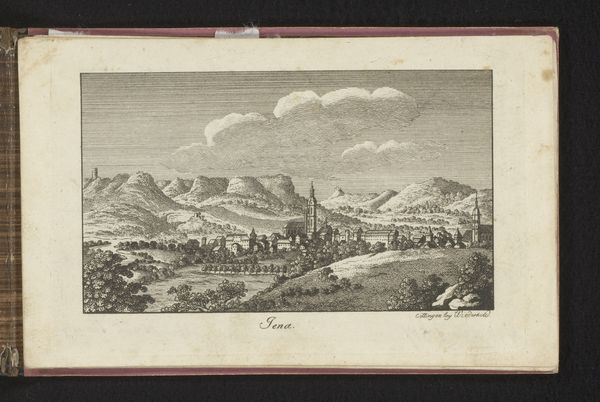
print, etching, watercolor
#
neoclacissism
#
water colours
# print
#
etching
#
landscape
#
watercolor
#
cityscape
#
watercolor
Dimensions: height 262 mm, width 383 mm
Copyright: Rijks Museum: Open Domain
Curator: Before us, we have "Gezicht op de stad Edinburgh," or "View of the City of Edinburgh," a print from 1753 by Robert Sayer, held here at the Rijksmuseum. It employs both etching and watercolor. Editor: It's quite striking, really. A meticulously rendered cityscape softened by the delicate watercolor washes. There’s a picturesque quality that romanticizes the urban sprawl. Curator: Absolutely. Look at how Sayer used etching to delineate the architecture. Consider the process. Each line etched into the metal plate would require precision and an understanding of perspective. The subsequent application of watercolor speaks to the material conventions of the time, layering handcraft and industrial modes of production to appeal to the wealthy tourist market of the period. Editor: Indeed. The print presents a specific vision of Edinburgh for a burgeoning audience interested in both landscape and social advancement. Its placement in a public institution such as the Rijksmuseum continues a tradition of exhibiting urban spaces as both places and ideal geographies that reflect back on us the very ideals to which we may or may not subscribe. Curator: Exactly. Note the way the social fabric is conveyed, or even produced, through consumption. The figures in the foreground, observing the city as a backdrop to their activity, underscore Edinburgh as something to be observed, consumed, and discussed as a symbol of status and material success. It reveals a world being assembled and consumed through visual imagery. Editor: And, critically, this ‘West View’ plays directly into established power structures. It's a deliberately composed, mediated image of the city, controlling what aspects are shown and how they are perceived by a largely elite audience. The availability and distribution of prints like this helped to shape and reinforce social hierarchies through image proliferation. Curator: Precisely. We can consider the very nature of "the view" as a constructed idea and marketable commodity, then question what gets included and excluded and who decides what gets memorialized. Editor: I suppose this print becomes a historical document showing us not just Edinburgh in 1753, but also how the people saw and portrayed it, reflecting what aspects they deemed essential or wished to elevate within the socio-political climate. Curator: Precisely! So, instead of thinking about the limitations imposed by our cultural filters, we are able to appreciate this piece for the complexities revealed by focusing on labor and the visual manufacture of social ideals. Editor: An incredibly insightful synthesis, a powerful view on "View of the City of Edinburgh" indeed!
Comments
No comments
Be the first to comment and join the conversation on the ultimate creative platform.

